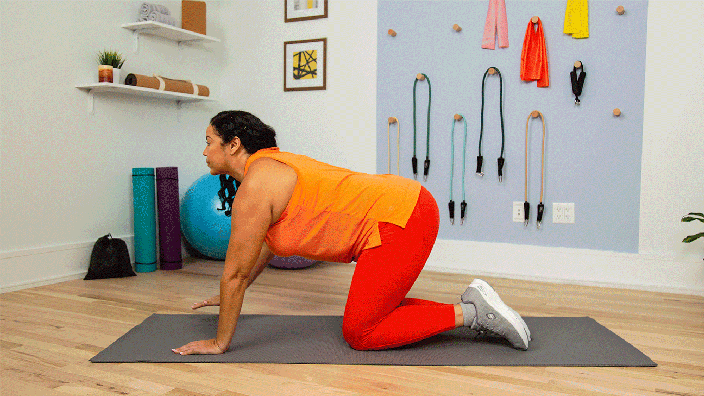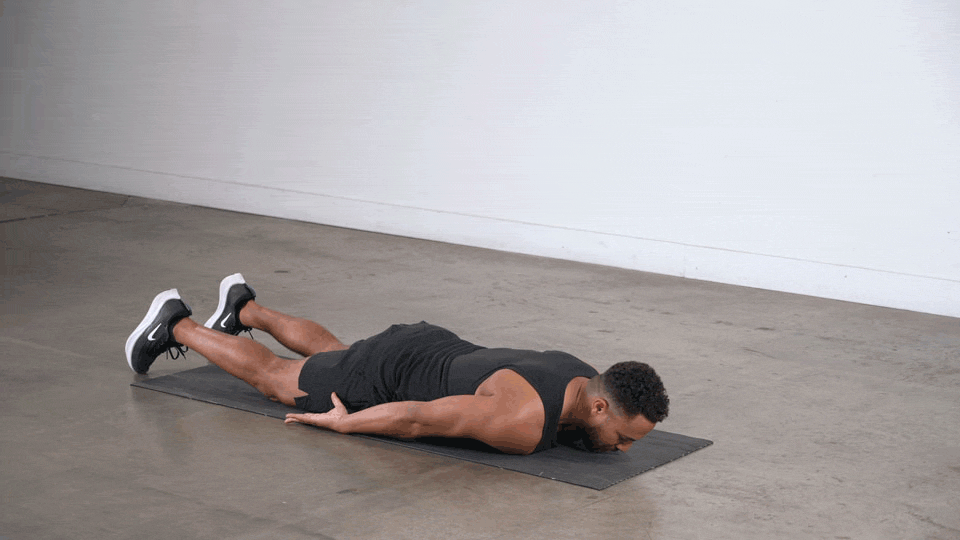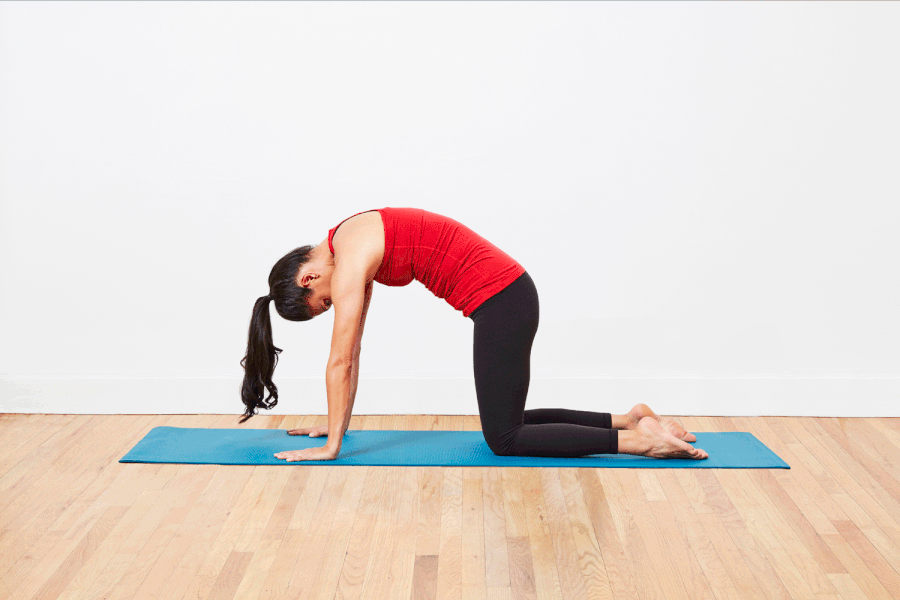
Ever wondered why your lower back screams after sitting too long or why your posture looks off in photos? That’s where your erector spinae exercises come in. They’re powerhouse muscles running along your spine, keeping you upright, balanced, and moving smoothly.
However, not everyone has access to a gym or fancy equipment. If you’re at home or on a tight budget, you don’t need expensive equipment to strengthen your back. Bodyweight exercises are a very effective option that you can do from the comfort of your own home (National Health Service, 2022). In this article, we’ll show you a series of basic, no-equipment exercises to strengthen your erector spinae muscles and develop a pain-free back.
Understanding the Erector Spinae: Key to a Stronger, Pain-Free Back.
Think of these as your spine’s personal bodyguards. They start in your lower back (around the sacrum) and extend up to your skull. These muscles have three major roles:
- Spinalis: This is the part closest to your spine, which is responsible for stability.
- Longissimus: The individual in the middle helps with extension and rotation.
- Iliocostalis: The one outer edge section is ideal for sidebending.
Why Should You Care for Erector Spinae?
Strong erector spinae muscles are essential for standing upright, moving around freely, and avoiding chronic back pain. Here’s why:
✔ Posture Support: Stop hunching over like a wilted plant. Strong back muscles keep you in perfect alignment.
✔ Better Balance: Whether you’re lifting weights or picking up your phone, these muscles help stabilize your movements.
✔ Pain Prevention: Weakness of the erector spinae puts more stress on the lower back. Strengthening them can reduce discomfort.
✔ Everyday Functionality: When these muscles are activated, it becomes easier to bend, twist, and lift things.
Erector Spinae Exercises You Can Do at Home
Strengthening your back doesn’t require expensive gym memberships or fancy machines. Whether you’re a beginner, a senior, or recovering from an injury, these erector spinae workouts at home can help you improve strength and flexibility with little or no equipment.
1. Bird-Dog

Equipment Needed: None (Bodyweight Exercise)
How to Do It:
- First, stand on all fours, placing your hands under your shoulders and your knees under your hips.
- Keeping your core tight, extend your right arm and left leg forward simultaneously.
- Hold for a second, then return to the starting position and flip to the other side.
- Repeat 10 to 12 times on each side.
Pro tip: To avoid arching your lower back, move slowly and in a controlled manner.
Benefits: Increases core stability, strengthens the erector spinae, and improves balance.
2. Superman Hold

Equipment Needed: None (Bodyweight Exercise)
Optional: A yoga mat for comfort
How to Do It:
- Lie face down with your arms extended forward.
- Raise your arms, chest, and knees off the ground by activating your lower back.
- Hold for 10-15 seconds before lowering back down.
- Repeat for up to 3 sets.
Variations: If this is too difficult, lift your legs or arms individually.
Benefits: To avoid lower back discomfort, focus on the erector spinae, glutes, and hamstrings.
3. Glute Bridge

Equipment Needed: None (Bodyweight Exercise)
Optional: Yoga mat, resistance band, or weights for added intensity
How to Do It:
- Lie on your back, knees bent, feet flat on the floor.
- Activate your core and lift your hips up until you form a straight line.
- Come back down carefully and repeat 12-15 times.
Pro tip: Contract your glutes at peak strength to increase muscle activation.
Benefits: It strengthens the lower back, hips, and glutes while increasing spinal stability.
4. Cat-Cow Stretch

Equipment Needed: None (Bodyweight Exercise)
Optional: A yoga mat for comfort
How to Do It:
- Begin by standing on all four feet.
- Inhale and arch your back upward (cow pose) and look upward.
- Exhale and round your spine by tucking your chin in (cat pose).
- Repeat this 8-10 times at a slow pace.
Benefits: Improves spine mobility, reduces stiffness, and relaxes the erector spinae muscles.
5. Plank

Equipment Needed: None (Bodyweight Exercise)
Optional: A yoga mat for comfort
How to Do It:
- Get into a forearm plank position, keeping your body straight.
- Keep your core engaged to prevent your lower back from sinking.
- Hold for 20-60 seconds.
Pro Tip: Contract your glutes while keeping your back straight to increase erector spinae activation.
Benefits: Improves general stability, core strength, and posture.
These erector spinae exercises for beginners, seniors, and even physiotherapy can be done at home to develop a strong, pain-free back. Just be mindful of erector spinae exercises to avoid, such as lifting excessively heavy weights or improper deadlifts, which can put pressure on your lower back.
Looking for other ways to protect your spine? Don’t forget to incorporate erector spinae stretches into your routine to keep your back flexible and pain-free!
Tips for Performing Erector Spinae Exercises Safely
When performing erector spinae exercises, safety must be a priority to avoid strain and damage. While completing erector spinae exercises at home, erector spinae exercises for beginners, or engaging in erector spinae physiotherapy, follow these tips for a safe and successful workout.
1. Warm-Up Properly
Before beginning any erector spinae exercises, spend at least 5-10 minutes doing light cardio and erector spinae stretches to warm up the muscles. Dynamic movements, such as moderate back extensions and cat-cow stretches, help prepare your spine for activity.
2. Maintain Proper Form
Good posture is essential, especially for erector spinae exercises for lower back pain. Keep your core engaged, your back straight, and do not overexert your lower spine. Poor posture can cause injury, especially in the elderly or those undergoing physiotherapy.
3. Progress Gradually
If you are new to these workouts, start with fewer repetitions and less resistance. As your erector spinae muscles grow, increase the intensity gradually. This strategy is essential for both beginners and seniors to avoid overexertion.
4. Listen to Your Body
Some activities can be dangerous, especially for those with back problems. Be mindful of erector spinae exercises to avoid, such as hard deadlifts and deep hyperextension, if they cause pain. If discomfort persists, see a physiotherapist before proceeding.
Following these safety precautions will allow you to successfully develop your erector spinae muscles and reduce the risk of injury.
How to Incorporate Erector Spinae Exercises into Your Daily Routine
Beginner-Friendly Routine
For individuals new to erector spinae exercises, start with a simple routine: 3 sets of 10-12 repetitions of each exercise, three to four times per week. Focus on erector spinae exercises for beginners, such as the bird-dog, superman, and cat-cow stretches, which help stimulate the muscles without putting too much stress on them.
Progression Plan
As your strength increases, continually increase the intensity by adding repetitions, sets, or resistance bands. To avoid damage, physiotherapy patients should perform prescribed erector spinae exercises for lower back pain. Elderly people can choose erector spinae exercises for seniors, which are gentler and emphasize flexibility and stability.
Consistency & Safety
Consistent exercise is necessary to strengthen the erector spinae muscles. However, be mindful of erector spinae exercises to avoid, such as hard deadlifts and incorrect back extensions, which can cause strain. To increase flexibility, always stretch your erector spinae muscles before and after your workout.
Listen to Your Body
Although some discomfort is normal, stop if you experience pain. This is especially important when doing erector spinae exercises at home, as incorrect technique can result in damage. Follow a steady progression and change your program according to your comfort level.
Closing
Incorporating erector spinae exercises into your daily routine can increase your back strength, posture, and mobility. You can develop your erector spinae muscles safely and successfully by following a systematic strategy, whether you are a beginner, a senior, or recovering from physical therapy. Regular practice can also help reduce lower back pain and improve overall spinal health.
Don’t delay—get started today! Even without equipment, basic movements like erector spinae stretches and bodyweight exercises can be effective. Be consistent, listen to your body, and increase the intensity gradually for long-term benefits.
Also Read: 4 Best Sauerkraut for Gut Health: Top Brands to Buy in 2025
Also Read: 5 Best Chair Yoga Apps for Seniors (Free Download & iOS Options Included)
Also Read: Kriya Yoga Breathing Techniques: 5 Powerful Methods for Inner Peace




